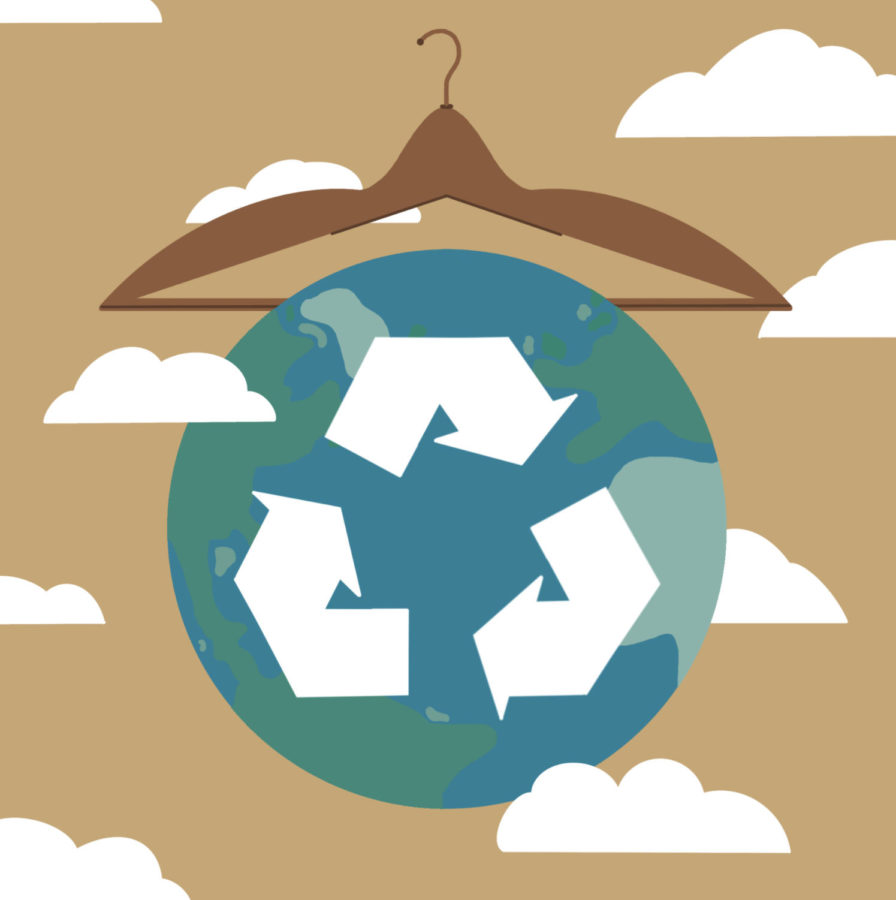Fashion woes: A long road to sustainability
There are countless fashion brands that promote their sustainability efforts. “Being naked is the #1 most sustainable option. We’re #2” is the tagline from the fashion brand Reformation. Rent the Runway asks us to “Do Sustainability in Style,” whereas the tagline of its competitor, Nuuly, claims to be “gentler on the planet.” The mother of fast fashion, Zara, has pledged to use 100% sustainable fabrics by 2025, while fellow fast fashion brand H&M plans to use 100% recycled or sustainable fabric by 2030. Luxury brand Louis Vuitton has introduced Life360, a sustainability roadmap for the next three, six and 10 years. Are these initiatives and taglines just platitudes to placate consumers’ demands for change? Are they simply promotional tactics intended to further their brands?
The fashion industry’s record on sustainability has been downright pathetic. It is hard to forget luxury label Burberry’s 2018 annual report, which revealed that $38 million worth of unsold stock was burnt. While shocking to consumers and investors, incinerating unsold stock is a common practice among luxury labels to maintain their pricing and exclusivity. Following intense media scrutiny and outraged consumers, the brand announced that it had stopped this practice and now touts an “Environmental, Social and Governance” (ESG) framework with an emphasis on sustainable practices.
Fashion accounts for up to 35% of the microplastics found in our oceans and has a massive carbon footprint, equaling the combined value of international flights and shipping. Burning unsold inventory made of synthetic fibers adds to the amount of microplastics in the atmosphere. It’s important to note that they wouldn’t have stopped this burning if it wasn’t for people calling them out. The media’s role in exposing the questionable business practices of fashion houses and educating consumers cannot be overlooked.
Then, there is the small matter of fast fashion’s business model, which is based on products that are trendy, cheaper and meant to be discarded after being worn a few times. Short production times and advanced e-commerce and technology enable labels like Zara and Shein to drop new material more frequently. Synthetic fabrics like polyester—which are derived from non-renewable sources—are preferred to deliver “newness” at low price points.
Overconsumption to a hedonic degree exists in fashion today. How many styles of jeans can a consumer possibly desire? Low, mid or high-waist; cropped, ankle length or culottes; wide-leg, barrel-shaped, balloon, straight, narrow, pencil or jeggings; distressed, embellished, paint-splattered, tie-dyed or embroidered; boyfriend, girlfriend, mom or dad styles, all in a dizzying array of washes and colors. The choices are endless. However, eventually it all gets discarded, and the overstock inventory is dumped into landfills.
Fast fashion’s “here today, gone tomorrow” business model stands in stark contrast to sustainable models that focus on people, environment and equity. According to the UN World Commission on Environment and Development, “sustainable development is development that meets the needs of the present without compromising the ability of future generations to meet their own needs.” So, while Zara’s efforts at sustainability matter, it is the business model of fast fashion that requires modification.
Overproduction, current manufacturing practices and overconsumption impact the number of items that get dumped into landfills. Ongoing upcycling initiatives appear to fall short in reducing waste in fashion production. It is a daunting task to create new clothing from scraps rather than just using a roll of new fabric. Therefore, the solution to the limitations of upcycling is a material revolution; we must upgrade to biodegradable textiles, re-engineered fabrics and compostable fibers. While the shift to using bio-based substitutes for animal-based (e.g., leather) and fossil fuel-based (e.g., polyester) fabrics has begun, it is fairly recent and requires more research, funding and acceptance within the fashion industry. For instance, sneaker brand AllBirds has upped the game by using eco-friendly materials for their extremely comfortable sneakers, while also working toward a climate-positive goal. Additionally, Adidas is working toward its own sustainability roadmap and claims that by 2025, nine out of 10 Adidas items will be made with environmentally friendly materials. While impressive targets and products, these are but a tiny part of the wider sustainability issue.
Another area that could use a refresh is consumer behavior. How many shirts are too many? Must we hoard every on-trend item? We need to embrace a responsible and ethical attitude towards fashion, while fashion brands need to provide consumers with better options. Furthermore, consumers’ appetites for recycled and reused items could also use whetting. Although some people might be deterred by the higher costs of sustainable brands,others might not be too keen on purchasing “not new” items.
Nevertheless, popular brands are inching towards sustainability. The athletic company Lululemon has added the “Like New” option, where one can trade in gently used gear for store credit. They also added the option to shop for resale items. Rental fashion is also another viable option that could use some more attention. Rent the Runway, a company who relies on rental fashion, has not shown profitability despite having been around since 2009. As a result, they have burnt through a lot of funding.
Lastly, the most important aspect of moving the fashion industry towards sustainability is regulation. Fashion industry rules should be rewritten and governments need to rethink tax laws. Taxing synthetics and plastics would deter manufacturers from using them and make eco-friendly options more lucrative; fines for textile wastes and burning inventory would force the fashion industry to find sensible and sustainable solutions. Moreover, legislative bills like the Fashion Sustainability and Social Accountability Act need to become law. If passed, it would allow New York to hold all fashion brands accountable for their role in the climate crisis. The law would require brands to be transparent about their supply chains, carbon emissions and wages. If brands are in violation of these regulations, they should be fined accordingly.
Overall, voluntary sustainability is not viable. Regulatory fashion sustainability is the next step. Fashion defines an era, a culture and a mindset. What do the landfills say about us?

Aambar Agarwal is a fourth-year student finishing up her majors in neuroscience and psychology and minor in public health. In her downtime, she can be...


